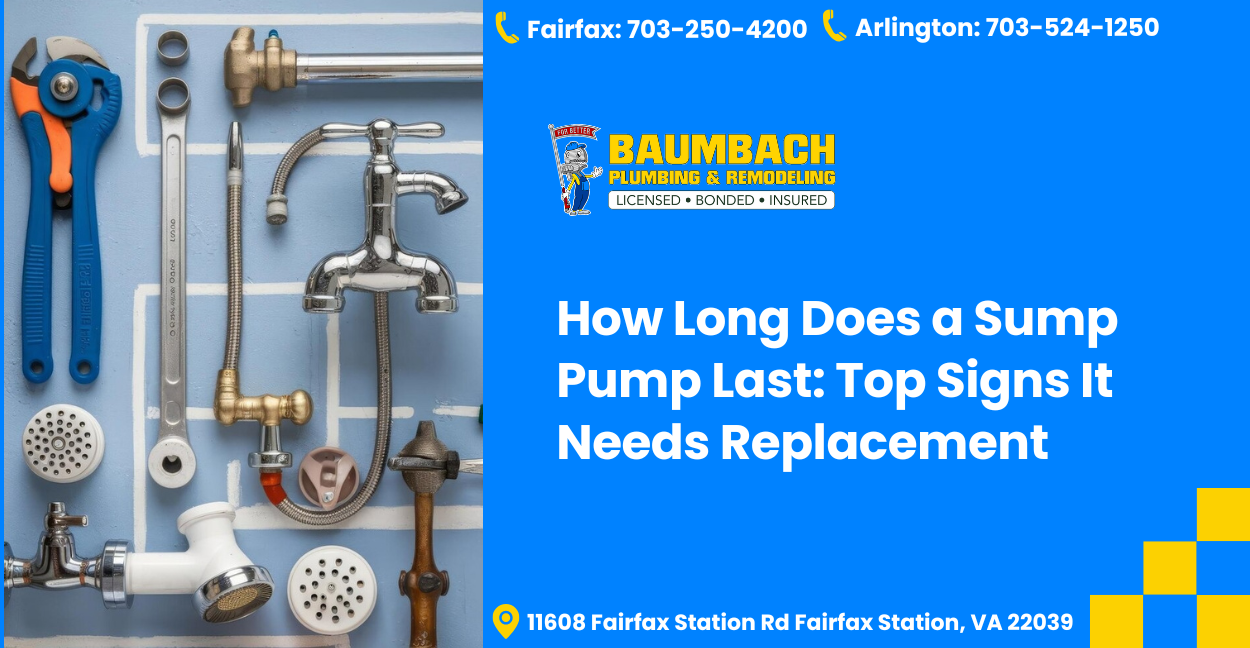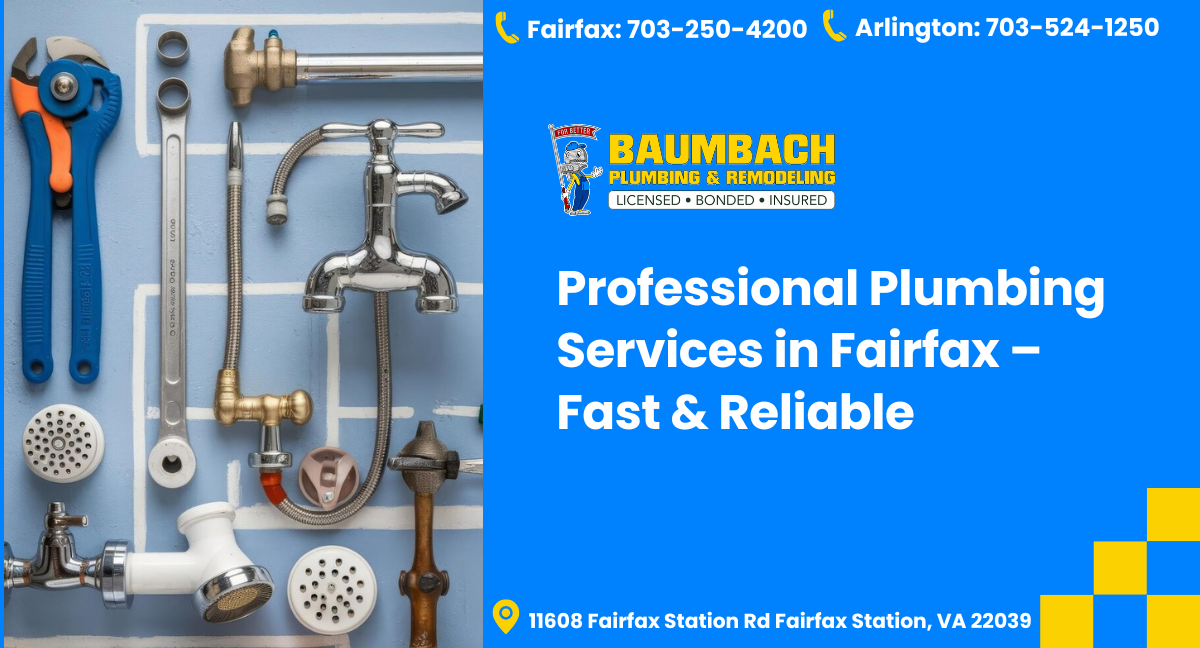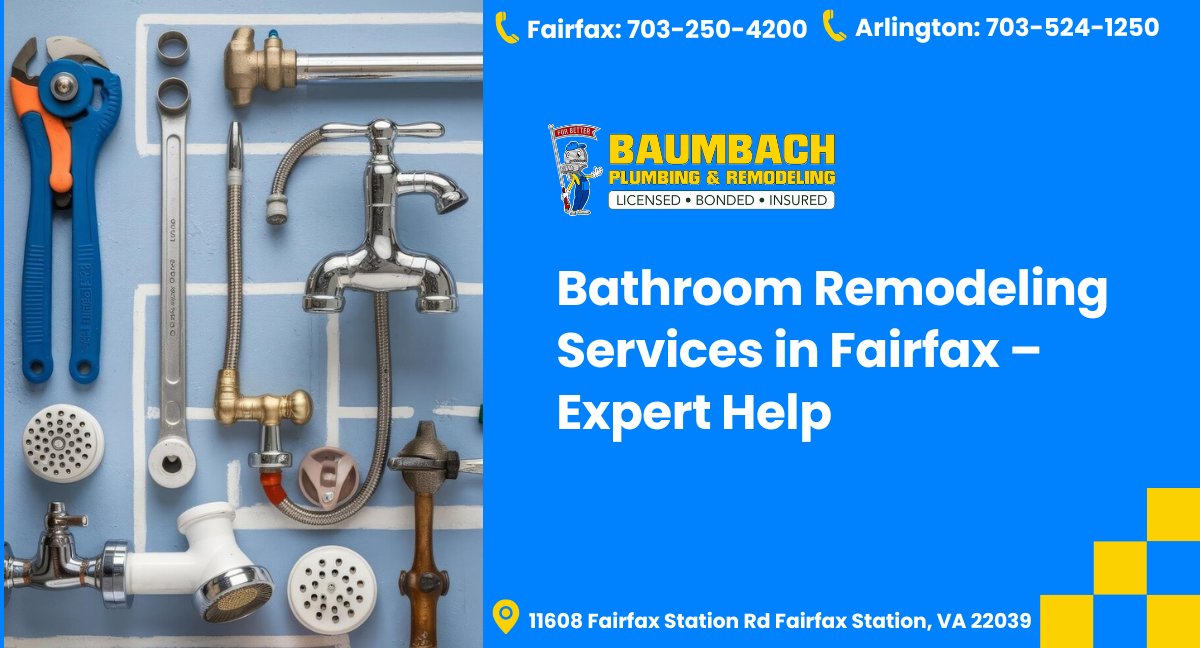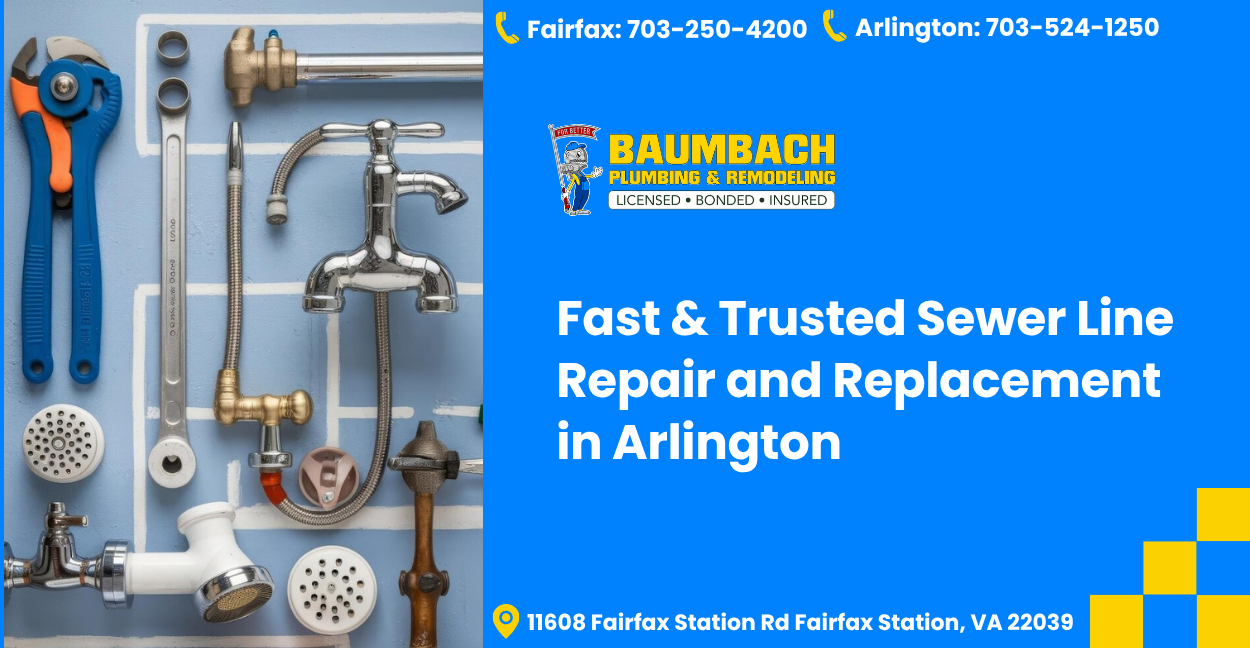If you own a home in Arlington, VA, a sump pump is more than just a convenience — it’s your first defense against basement flooding. But how long does a sump pump last? Understanding its lifespan and knowing the signs of failure can save you from costly water damage and unexpected repairs.
A failing sump pump can lead to serious issues like foundation damage, mold growth, and costly restoration projects. That’s why knowing when to replace it is just as important as having one in the first place. This guide will explain sump pump basics, average life expectancy, warning signs for replacement, and tips for maintaining your system so you can protect your home year-round.
Sump Pump Basics & Average Lifespan
What Is a Sump Pump?
A sump pump is installed in a sump pit to remove water from your basement or crawl space. It activates automatically when water reaches a certain level, keeping your home dry and protected. This device is a crucial part of home waterproofing, especially in areas prone to heavy rain or high groundwater levels. Without it, even small leaks or seepage can turn into major flooding problems. Proper installation and regular upkeep ensure your sump pump delivers reliable protection year-round.
Typical Lifespan in Arlington, VA
On average, sump pumps last 7–10 years. Factors like pump quality, frequency of use, water conditions, and regular maintenance can influence this lifespan. Homes with heavy rainfall or poor drainage may need replacements sooner. Additionally, older sump pump models may wear out faster compared to modern, energy-efficient designs. Regular inspection and servicing can help maximize a pump’s operational life, saving homeowners from costly emergency replacements.
Key Signs Your Sump Pump Needs Replacement
1.) Frequent Cycling & Strange Noises
If your sump pump is constantly turning on and off or making loud grinding noises, the motor or float switch could be failing. This often means the pump is working harder than it should, which can lead to complete breakdown if ignored. Strange noises such as rattling or humming may also indicate worn bearings or debris stuck in the pump, which can cause further damage if not addressed promptly.
2.) Reduced Pumping Capacity
When the pump struggles to remove water or takes longer to empty the sump pit, it may be due to worn impellers, motor issues, or clogs. Reduced pumping capacity means your pump cannot handle heavy rain or sudden surges of water effectively. Over time, this can lead to water accumulation in your basement, increasing the risk of flooding and costly repairs.
3.) Visible Corrosion or Failure to Activate
Rust, corrosion, or a pump that doesn’t activate during testing are clear signs it’s time for a new system. Corrosion can weaken the pump’s structural integrity and lead to leaks or breakdowns. A pump that fails to turn on automatically can mean a problem with the float switch or electrical system — both of which are critical for keeping your home safe from water damage.
4.) Constant Overheating
If your sump pump frequently overheats, it could be struggling due to motor strain or blocked discharge pipes. Overheating reduces the lifespan of your pump and increases the risk of a complete failure. This can be especially dangerous during heavy rain when the pump is most needed.
5.) Unusual Vibrations
A sump pump that vibrates excessively while running is likely experiencing mechanical issues. Loose components or worn bearings could be the cause, and ignoring the problem may result in a full breakdown. Persistent vibrations also indicate that the pump is working under stress, which shortens its lifespan.
6.) Water in the Basement After Pump Activation
If your sump pump runs but you still notice water in your basement, it means the pump isn’t removing water efficiently. This could be due to a blockage, a worn impeller, or inadequate pump capacity. Continuing to use a failing pump can lead to bigger problems, including severe water damage.
7.) High Electricity Bills
A sump pump that consumes more electricity than usual could be working harder to compensate for wear and tear. This is often a sign that the pump is deteriorating and may soon fail. Keeping an eye on your electricity usage can help you detect pump problems early and avoid costly emergencies.
Why Timely Replacement Matters
Replacing your sump pump before it fails is not just a matter of convenience — it’s a crucial step in protecting your home from serious water damage. Basement flooding can cause mold growth, compromise structural integrity, damage electrical systems, and ruin personal belongings. Mold alone can create long-term health issues and require costly remediation.
A sump pump failure often happens unexpectedly, typically during heavy rainfall or storms when you need it the most. By replacing your pump at the right time, you avoid emergency repairs, costly restoration, and the stress of dealing with a flooded basement. Timely replacement also ensures your system operates at peak efficiency, giving you peace of mind knowing your home is protected year-round.
Choosing the Right Replacement Sump Pump
When your sump pump needs replacing, selecting the right pump is essential for ensuring reliable protection. There are several factors to consider so you get the best system for your home and budget.
1.) Submersible vs. Pedestal Pumps
Submersible pumps are installed directly in the sump pit and operate underwater, making them quieter and more efficient for heavy water removal. They are also less prone to clogging, and modern models are built for durability. However, they can be harder to repair and generally cost more.
Pedestal pumps have their motor located above the pit, making them easier to service and replace. They typically cost less and last longer in low-use conditions. However, they are noisier, less aesthetically pleasing, and can be less efficient in handling large volumes of water.
2.) Backup Pump Options
A backup sump pump adds an extra layer of protection, especially during power outages or extreme weather. Battery-operated backups ensure your sump pump runs when electricity fails, while water-powered backups rely on your home’s plumbing to operate. Both types help safeguard your home against flooding and give you peace of mind during emergencies. Choosing the right backup system depends on your home’s needs, budget, and how much protection you want.
Don’t wait for a sump pump failure to cause costly damage. Protect your home and peace of mind by scheduling regular inspections and maintenance today. Contact Baumbach Plumbing & Remodeling for expert sump pump services in Arlington, VA.
Maintenance Tips to Extend Pump Life
Proper maintenance can greatly extend the life of your sump pump and keep it running efficiently for years. Regular care not only prevents costly repairs but also ensures your home stays protected from flooding. At Baumbach Plumbing & Remodeling, we provide expert sump pump inspection, maintenance, and replacement services to homeowners in Arlington, VA, helping ensure your system runs smoothly year-round. Here are essential maintenance tips every homeowner should follow:
1.) Regular Inspections
Before the rainy season or heavy storm months, inspect your sump pump to ensure it is in good working condition. Look for signs of wear, corrosion, or damage to the float switch, motor, and discharge pipe. Check electrical connections to make sure they are secure and dry. A small inspection now can prevent a major failure later when water levels rise unexpectedly. If you want peace of mind, our team at Baumbach Plumbing & Remodeling can perform professional inspections to identify potential issues before they turn into costly repairs.
2.) Cleaning the Pit
Over time, dirt, gravel, and debris can collect in the sump pit, clogging the pump and making it work harder than necessary. Remove any buildup from the pit at least twice a year. This not only improves performance but also reduces wear and tear on the pump. For best results, keep the area around the pit clean and ensure the discharge pipe is clear and unobstructed.
3.) Periodic Testing
Testing your sump pump regularly is critical to ensuring it works when you need it most. Knowing how to test your sump pump is a simple but important step for every homeowner. Start by pouring a bucket of water into the sump pit to simulate rising water levels. The pump should activate automatically and drain the water quickly. This test helps identify potential problems such as a faulty float switch, clogs, or a slow pump before they turn into costly emergencies. Regular testing not only extends the life of your sump pump but also gives peace of mind that your home is protected.
4.) Check for Unusual Noises or Vibrations
Listen for any unusual sounds such as grinding, rattling, or humming while the pump operates. These noises can indicate worn bearings, motor strain, or debris caught in the pump. Addressing these early with a professional inspection can save you from costly repairs or premature pump replacement.
5.) Inspect the Discharge Line
Ensure the discharge pipe is directing water away from your home and is not clogged or frozen. In colder months, check that the pipe is protected against freezing, which can cause backups and damage the pump. A clear and well-maintained discharge line ensures optimal pump performance and protects your foundation.
6.) Schedule Professional Maintenance
Even with regular DIY checks, having a professional inspect your sump pump annually can ensure its longevity. At Baumbach Plumbing & Remodeling, we offer comprehensive sump pump maintenance and replacement services in Arlington, VA. Our expert technicians can identify hidden issues, replace worn parts, and advise you on the best time for a replacement. Professional maintenance gives peace of mind that your sump pump will work reliably when needed.
Conclusion
Knowing how long does a sump pump last and recognizing the signs it needs replacement is essential for every homeowner in Arlington, VA. A failing sump pump can cause basement flooding, structural damage, and costly repairs — problems that are easy to prevent with proactive maintenance and timely replacement. Regular inspections, cleaning, and testing help extend your pump’s life, while trusting experts like Baumbach Plumbing & Remodeling ensures your system remains in top condition. Don’t wait for failure — take action now to protect your home and your peace of mind.
Frequently Asked Questions
1.) How long should a sump pump last under normal conditions?
A sump pump typically lasts between 7 to 10 years under normal conditions. This lifespan can vary depending on the quality of the pump, how often it operates, and how well it is maintained. Regular upkeep can extend its service life significantly, preventing unexpected breakdowns and protecting your home from flooding.
2.) What is the most common cause of sump pump failure?
The most common causes of sump pump failure include motor burnout, clogged discharge lines, and malfunctioning float switches. These issues often occur when pumps are not regularly maintained. Detecting and repairing these problems early can prevent major damage to your home and avoid costly replacements.
3.) Can I maintain my sump pump myself?
Yes, homeowners can perform basic maintenance such as inspecting the pump, cleaning the sump pit, and testing its operation periodically. However, some problems require professional expertise. For thorough inspections and repairs, it’s best to rely on a trusted service provider like Baumbach Plumbing & Remodeling.
4.) How often should I test my sump pump?
You should test your sump pump at least twice a year, ideally before and during the rainy seasons. Testing ensures that the float switch and motor are functioning correctly. It’s a simple step that can prevent emergencies and ensure your pump performs reliably when needed most.
5.) Is upgrading to a backup sump pump system worth it?
Absolutely. Backup systems, whether battery-operated or water-powered, provide extra protection during power outages or severe storms. They give peace of mind knowing your basement will stay dry even if your primary pump fails. Investing in a backup system is a smart way to safeguard your home and belongings.
6.) How can I tell if my sump pump is working properly?
You can tell if your sump pump is working by testing it regularly. Pour a bucket of water into the sump pit and watch if the pump activates and drains the water efficiently. Listen for unusual noises during operation, and check the discharge line for blockages. Regular testing helps catch issues early before they become costly problems.
7.) How much does it cost to replace a sump pump in Arlington, VA?
The cost of sump pump replacement can vary depending on the pump type, capacity, and installation requirements. Factors such as the complexity of the installation and the need for additional repairs can also influence the overall cost. At Baumbach Plumbing & Remodeling, we provide expert advice and quality installation to ensure your sump pump lasts for years and keeps your home safe.
Trusted Plumbing Solutions by Baumbach Plumbing & Remodeling
Whether you’re dealing with a leak, low water pressure, or planning a plumbing upgrade, Baumbach Plumbing & Remodeling is here to help. Our licensed professionals offer a full range of services, including drain cleaning, sewer line repair, pipe replacement, water heater installation and repair, and bathroom and kitchen plumbing remodeling. We use the latest tools and techniques to ensure efficient, long-lasting results.
Proudly serving Fairfax, McLean, Alexandria, and nearby areas, we’re committed to fast, reliable, and affordable plumbing solutions. Contact us today to schedule your service!





